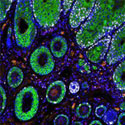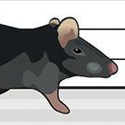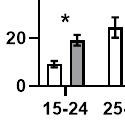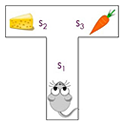On November 16, 2023, the NIDA-IRP will be hosting a special symposium celebrating 20 years of the Jacob P. Waletzky award. The Jacob P. Waletzky Award is given by the Society for Neuroscience to an early career scientist whose independent research has led to significant conceptual and empirical contributions to the understanding of drug addiction…. [Read More]
News Main
Technology Development Initiative – Paper of the Month – August 2023
Engineering of NEMO as calcium indicators with large dynamics and high sensitivity. Nat Methods.
Current genetically encoded calcium indicators have suboptimal dynamic range and peak signal-to-baseline ratios. Li et al. engineered a new series of mNG-based calcium indicators (NEMO) that exhibit fast kinetics with up to 100-fold increase in dynamic range and 20-fold increase in signal-to-baseline ratios when NEMO sensors were compared to GCaMP6m or NCaMP7. Increased fluorescence and dynamic range of NEMO should facilitate the in vivo monitoring of calcium changes in deep brain structures and cellular organelles. [Read More]
Waving Through the Window: A Model of Volitional Social Interaction in Female Mice.
Featured Paper of the Month – August 2023
Published in Biological Psychiatry by Leslie Ramsey, and Marco Venniro, et al. of the NIDA IRP Neurobiology of Relapse Section.
Using a battery of behavioral tests, we demonstrated that female CD1 mice find social interaction more rewarding compared to female C57BL/6J mice. Our data show that CD1 mice are a better strain for studying female social reward learning.
Amy Newman Inducted Into MEDI Hall of Fame
Dr. Amy Newman is one of the three 2023 Hall of Fame inductees of the Medicinal Chemistry (MEDI) Division of the American Chemical Society (ACS). Dr. Newman shares this honor with two other scientists, Dr. Donna Huryn from the University of Pittsburgh and Dr. Joel Barrish from RA Ventures. Dr. Newman is the fifth scientist… [Read More]
Targeting corticostriatal transmission for the treatment of cannabinoid use disorder
Reviews To Read – July 2023. Published in Trends in Pharmacological Sciences by lead author Sergi Ferré of the NIDA IRP Integrative Neurobiology Section. It is generally assumed that the reinforcing effects of cannabinoids are related to their capacity to induce striatal dopamine release by targeting cannabinoid receptors in the mesencephalic origin of the dopaminergic… [Read More]
Technology Development Initiative – Paper of the Month – July 2023
Revealing the structure of pharmacobehavioral space through motion sequencing. Nat Neurosci.
Standard behavioral assays that are used for screening candidate therapeutic drugs, such as the elevated plus maze and forced swim test, yield only one or two dimensions of information. Wiltschko et al. used a machine learning algorithm called MoSeq (for motion sequencing) to analyze 3D video recordings of twenty minutes of open field mouse activity, thereby obtaining a much higher dimensional readout of behavior in response to a wide variety of psychoactive drugs and doses. [Read More]
Dopamine D3/D2 Receptor Ligands Based on Cariprazine for the Treatment of Psychostimulant Use Disorders That May Be Dual Diagnosed with Affective Disorders
Featured Paper of the Month – July 2023
Published in The Journal of Medicinal Chemistry by Emma Gogarnoiu, Caleb Vogt and Amy Hauck Newman, et al. of the NIDA IRP Medicinal Chemistry Section.
Cocaine and methamphetamine are highly addictive psychostimulants that continue to challenge the health and well-being of those who develop a psychostimulant use disorder (PSUD). To date, there are no FDA approved medications for the treatment of PSUD and this provides a significant challenge to curb its destructive nature and prevent death by overdose.
Flow Cytometry of Synaptoneurosomes (FCS) Reveals Increased Ribosomal S6 and Calcineurin Proteins in Activated Medial Prefrontal Cortex to Nucleus Accumbens Synapses
Hot Off the Press – June 27, 2023 Published in The Journal of Neuroscience by Javier Rubio and Bruce Hope, et al. of the NIDA IRP Neuronal Ensembles in Drug Addiction Section. The study is a novel approach to study molecular alterations in individual synapses using Flow Cytometry of Synaptoneurosomes (FCS). The FCS approach was… [Read More]
Overdose mortality rates for opioids and stimulant drugs are substantially higher in men than in women: state-level analysis
Hot Off the Press – June 22, 2023 A new collaborative study coauthored by investigators from Mount Sinai School of Medicine, NIDA-IRP, and NIDA-HQ showed that fatal overdoses on opioids or psychostimulants are 2-3 times more common in men than in women. This sex difference is far larger than those seen in most health-related behaviors. … [Read More]
Technology Development Initiative – Paper of the Month – June 2023
The Successor Representation: Its Computational Logic and Neural Substrates. J Neurosci.
In this paper, Gershman presents and builds upon a reinforcement learning algorithm first proposed by Peter Dayan in 1993, called the successor representation, which solves some important problems that previous classes of reinforcement learning algorithms have had. Recent research has supported the idea that humans and other animals use successor representations for learning and decision making under some conditions and has proposed that dopaminergic mechanisms could build successor representations in the brain. [Read More]










